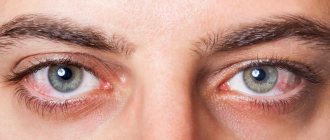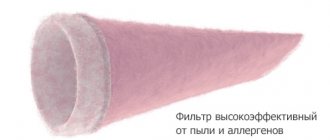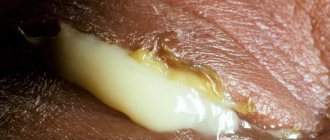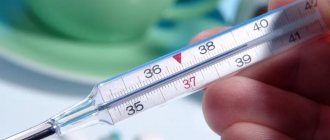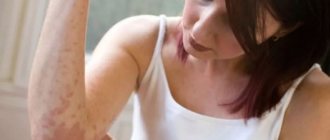Hay fever or “hay fever” is an allergic disease with which people of all ages most often seek help from an allergist. Hay fever occurs in humans from contact with pollen from various plants and primarily affects the mucous membranes of the eyes and respiratory tract. In nature, many types of plant or flower pollen have pronounced allergic activity, which in highly sensitive people, after contact with pollen, causes the appearance of a seasonal disease with a whole complex of allergic reactions. But a huge number of people on earth may not experience any discomfort from contact with dusty plants. Unless the flowering plant has a pungent odor that can make a person sneeze a couple of times. But for people suffering from hay fever, the joy of awakening nature is overshadowed by the development of allergies. Many patients with symptoms of this seasonal disease experience a complete disruption of their usual rhythm of life - they are unable to work, study or even carry out daily activities. Why does this happen?
Reasons for the development of hay fever
An allergic reaction is, first of all, a reaction of the human immune system to the entry of a foreign substance (allergen) from the external environment into the human body. In case of hay fever, pollen from plants acts as such a substance. An ordinary person who is not exposed to its dangerous effects does not experience any immune reaction when inhaling and exhaling pollen. But the immune system of a patient with hay fever, after the smallest pollen, even 10 microns, gets into the respiratory tract or on the mucous membrane of the eyes or on the skin, turns on the system for recognizing the allergic substance as some kind of pathogenic virus or bacteria, and then starts from this “ harmful" agent to actively defend itself - an allergic reaction or allergic inflammation appears. From 1 to 15-20% of the population may have an allergy to pollen, depending on the climate zone and regional characteristics. Naturally, people get sick less often in the north, and more often in the south. Periods of exacerbation of hay fever are directly related to the flowering periods of certain plants. An allergic reaction in patients occurs when alder, birch, hazel, oak, the cereal family, wormwood, ragweed and many other plants bloom. The symptoms of hay fever intensify in windy and dry weather due to an increase in the concentration of pollen in the air. With the onset of damp and rainy weather, the pollen count decreases and the severity of the disease decreases. Hereditary predisposition plays a significant role in the development of hay fever. It has been clinically proven that if both parents of a child are susceptible to allergic diseases, then the probability of allergies in the child can reach 80%, if only one of the parents is allergic - 25-40%. In cases where the parents did not have such a disease, the risk of developing allergic diseases is only 10%.
Pathogenesis (how the disease develops)
Plant pollen enters the child's body through the respiratory system and causes activation of the immune system. The nasopharynx reacts first, where the production of immune cells (macrophages, lymphocytes, eosinophils), as well as specific antibodies to the pathological substance, begins. Immunoglobulins are located on the surface of cells of target organs: the mucous membrane of the respiratory tract and eyes, on the skin.
When a relatively large amount of antigen enters the body again, an active inflammatory process quickly develops; a huge amount of histamine is released into the blood, provoking a pronounced reaction of the body.
Symptoms and manifestations of hay fever
The most common manifestations are symptoms of allergic rhinitis, which is characterized by:
- prolonged sneezing - copious mucous discharge from the nose
- itching in the nose area
- soreness in the oropharynx
- mucus draining down the back of the throat (“postnasal drip”)
- nasal congestion
In most patients, rhinitis is combined with allergic conjunctivitis :
- redness and swelling of the mucous membranes of the eyes,
- itching of eyelids,
- photophobia,
- lacrimation,
- “sand in the eyes.”
Another manifestation of hay fever may be pollen bronchial asthma , when it appears:
- cough,
- labored breathing,
- “wheezing” and/or “wheezing” in the chest,
- suffocation.
Somewhat less frequently, with hay fever, itchy skin rashes (urticaria) or local swelling (Quincke's edema or angioedema) , individual manifestations of atopic dermatitis, are observed.
Severity of hay fever
Depending on the symptoms, hay fever can be mild, moderate or severe .
In moderate to severe cases, symptoms of pollen intoxication may be observed in the form of general weakness, malaise, headache, and loss of appetite. In case of inadequate treatment of hay fever or if it is severe, complications of the disease may appear as a result of the addition of a secondary infection - purulent conjunctivitis, sinusitis, sinusitis, bronchitis, pneumonia.
In some patients, a reaction to plant pollen may be accompanied by symptoms of food allergy development, and its manifestations will be year-round. For example, if a patient is allergic to tree pollen, then he may have a reaction to tree fruits (apples, pears, peaches, apricots, plums, nuts, etc.), as well as to raw carrots and some other types of products . This is manifested by the presence of a sore throat, discomfort in the throat area, itching, swelling in the mouth and throat area.
Sometimes hay fever and allergic rhinitis can be accompanied by the development of polypous rhinosinusitis. You need to know that manifestations of seasonal allergic rhinitis and bronchial asthma are observed not only with allergies to pollen, but also to mold fungi (mold). A huge number of microscopic spores of mold fungi appear in the air from the beginning of sporulation - from March to mid-autumn.
Thus, hay fever can also occur as part of year-round allergic rhinitis (persistent allergic rhinitis), when an allergy to pollen is combined with an allergy to non-seasonal allergens.
Very often, hay fever can be hidden under diagnoses of “chronic rhinitis” or “vasomotor rhinitis ,” which leads away from the choice of the correct treatment tactics.
General information
Hay fever is a seasonal disease. An exacerbation occurs between April and September, when trees, cereals, and weeds bloom. Allergies can be caused by any plant, but ragweed often provokes unpleasant symptoms.
If hay fever becomes chronic, the disease can manifest itself even during periods of remission (in autumn-winter), if the child consumes highly allergenic foods. Juices and fruits also cause aggravation, while parents are often unaware of the true cause of the child’s illness. To find out, you need to see a doctor and take an allergy test.
Diagnosis of hay fever
If you suspect the development of hay fever, you must first of all seek qualified help from a therapist or allergist. It is very important to exclude the presence of diseases that have a similar course. First of all, these are acute respiratory infections (ARVI), acute tracheitis or bronchitis. It is important to remember that only an experienced allergist-immunologist , using modern diagnostic equipment, can accurately make the correct diagnosis and prescribe adequate treatment.
Treatment and diagnosis of hay fever at the National Medical Research Center of Otorhinolaryngology of the FMBA of Russia is successfully carried out by specialists from the Department of Allergology and Immunology. First of all, to make a diagnosis of hay fever, an allergist-immunologist conducts a thorough collection and analysis of the patient’s medical history and a thorough examination. If necessary, an otorhinolaryngologist performs rhinoscopy to determine the condition of the nasal cavity, its swelling and narrowing of the nasal passages.
In our Center, a specialist allergist conducts a comprehensive allergy diagnosis for the patient to clarify the causally significant allergen. Allergy examination is carried out using the most modern diagnostic methods. Skin tests can identify the allergen within 20 minutes of starting the test.
Skin allergy testing has also proven itself well for diagnosing household allergies (allergy to house dust, microscopic mites, library or book dust), allergies to pets (epidermal allergies), and food allergies .
Skin tests are a safe and highly informative examination method. It is advisable to carry out such tests outside of an exacerbation of an allergic disease. NMITSO conducts so-called “prick testing” - this is the most modern method of skin testing. The advantage of “prick testing” compared to classic scarification tests is that there is less trauma to the skin with a higher specificity of the reaction (i.e., a nonspecific skin reaction to the scarification effect is eliminated, the likelihood of a “false-positive” result is reduced).
The test technique involves applying small drops containing various allergens to the skin of the forearm. Then a minimal superficial puncture of the skin is carried out (“prick” means an injection), and then, 20 minutes after application, a visual analysis of the reaction that has occurred is performed. If you have an allergy, a blistering reaction occurs at the site where the culprit allergen is applied. The size of the blister determines the degree of reaction.
It is advisable to carry out skin testing for patients with hay fever in the autumn-winter period. It is recommended to carry out tests after stopping the use of antiallergic drugs, since when taking antihistamines, the skin “blocks” and tests may show a false negative result. If necessary, the patient undergoes a blood test for the presence of allergic antibodies (immunoglobulin E, IgE) to a wide variety of allergens. This analysis can be done on patients of any age, regardless of the treatment or phase of the disease.
Features of allergy tests in children
Allergy tests are performed on children over 5 years of age. For children under five years of age, we recommend another research method - a specific blood test for the presence of protein antibodies - specific immunoglobulins of class E, which are produced by the immune system in response to exposure to a certain type of pollen. Unlike skin tests, such a study can be carried out throughout the year, without paying attention to the use of medications and the patient’s health status. This study is the only allergological method for detecting hay fever in children.
Preventive actions
Of course, we should not forget about prevention, because it often helps prevent a severe course.
As an infectious disease specialist notes, the best way to prevent hay fever is to avoid contact with pollen. To do this, those who suffer from such manifestations try to plan a vacation during the flowering of the allergen in order to go to a place where it is not present.
But, if it is not possible to change the region for a while, it is worth using other protection options. These include air conditioning the room, wet cleaning on a regular basis, and getting rid of dust and dust accumulations at home.
Treatment of hay fever
Is it possible to get rid of hay fever forever? Unfortunately, at present there is still no medicine that can completely cure this disease. Modern medicine also cannot change the genotype that forms the disease in a patient. But it can significantly alleviate the suffering of a patient with hay fever. In addition, there is a special method of non-drug therapy that can significantly reduce or even prevent the manifestations of the disease, prevent the progression of the disease (in particular, the transition of allergic rhinoconjunctivitis to bronchial asthma), and in some cases eliminate the manifestations of hay fever for many years. The correct treatment for hay fever is selected and carried out only by an allergist-immunologist .
In the Department of Allergology and Immunology of the Federal State Budgetary Institution NMITSO FMBA of Russia, treatment of hay fever is carried out by experienced allergists-immunologists in accordance with international standards for the treatment of allergic diseases. Once a causally significant allergen has been identified, the patient must completely exclude or limit contact with this allergen. During the period of dusting of the specified allergen, the most radical method of treatment is to go to another climatic zone, where this pollen does not exist (high mountains, northern territories, etc.) or dusting of allergenic plants occurs at an earlier or later date. Despite the fact that this is the most effective way to avoid the manifestations of hay fever, it is not always possible to use it in our everyday life. And then there is a need to take special antiallergic drugs during the period of manifestations of the disease. They can be either general (systemic) action - tablets, injections, or local action - nasal spray, eye drops, inhalations.
The allergist-immunologist of the department makes individual prescriptions for each patient to take therapeutic medications, taking into account the patient’s age, severity and clinical manifestations of the disease, and the presence of concomitant diseases. Today, the most successful and effective way to treat hay fever, which allows not only to influence the emerging symptoms of the disease, but also to make seasonal allergies disappear for several years, or its manifestations become minimal, is allergen-specific (ASIT) or specific ( SIT) immunotherapy.
ASIT is the only pathogenetic treatment method for hay fever. ASIT allows you to change the response of the immune system to an allergen, to ensure that contact with the allergen during the dusting season does not cause an allergic reaction in the patient. This is achieved by dosed administration to the patient according to a certain method of increasing concentrations of the allergen - from the most minimal, which initially does not cause any manifestations, to high concentrations. During ASIT, a restructuring occurs in the immune system and it ceases to react painfully to the incoming allergen. This type of treatment is carried out only under the supervision of a qualified allergist-immunologist, because It is not the medicine that is introduced, but the very source of the disease.
This treatment has a lot of nuances, which can only be safe and effective in the competent hands of a specialist. To achieve a lasting effect in accordance with international standards, treatment should be carried out for 3-5 years. In this case, various techniques are used. It is possible to pre-seasonally administer the allergen (subcutaneously, in the arm) for several months, 2-3 injections per week; It is possible to use a prolonged allergen, which is administered less frequently - at the stage of dosing once a week, then once a month. It is possible to carry out sublingual (sublingual) ASIT, when the patient, according to a certain scheme, drips the allergen independently at home under the tongue, and periodically comes to the allergist-immunologist to monitor and correct the therapy. This method is also applicable to young patients, starting from 5 years of age.
The ASIT method is selected by an allergist-immunologist taking into account the individual characteristics of each patient, i.e. based on medical indications/contraindications and which method is more convenient for the patient. Do not treat hay fever yourself, do not use advertised “magic drugs”, which at best will not bring any treatment effect, and in the worst case can be harmful to your body and life irreparable harm!
Fever therapy
Doctors have a variety of techniques at their disposal to cope with hay fever. So, medications are often used. “Drug treatment for hay fever includes the use of antihistamines, mast cell membrane stabilizers, glucocorticosteroids, anticholinergics and vasoconstrictors. In patients with a clearly identified allergen, allergen-specific immune therapy (ASIT) is used with great effectiveness. The effectiveness of such therapy is on average about 80%,” says Olga Matyukhina.
But all this, of course, in agreement with the doctor and under his supervision. Only a specialist can competently adjust the regimen if necessary, which ensures the best effect of therapy.
Pollen or infection? What diseases are often mistaken for allergies Read more
Again, you cannot leave the situation to chance, or prescribe treatment yourself: it may not work, and time will be lost, the situation will become more difficult.

